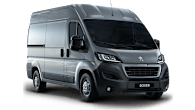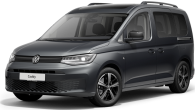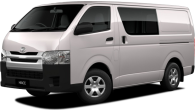Everybody knows the bestselling vehicles in Australia are utes.
It’s been like that since the middle of last decade when the Toyota HiLux and more latterly, the Ford Ranger steamrolled their way to the top of the pops.
But did you know in the UK in 2021 and 2022 the number-one vehicle was the recently-superseded Ford Transit Custom?
Now there’s the all-new, fifth-gen version (and the second to wear the Custom suffix), arriving at your Ford dealers now across Australia, targeting the Hyundai Staria Load and the evergreen Toyota HiAce amongst a troop of others.
A pioneer amongst mid-sized vans, the British-born, Türkiye-built Transit Custom has long traded on European engineering – with premium pricing to match.
Is the newcomer worth the extra money? Let’s find out.
-
Ford abandons petrol SUVs in Australia: Ford Puma ICE axed, to be replaced by all-electric Puma Gen-E as US giant doubles-down on Ranger, Transit and Mustang
-
Ford loses $2 billion in three months on EVs. How are car makers supposed to survive against cut price electric cars such as the BYD Atto 3 and MG4? | Analysis
-
The $500,000 hardcore 2025 Ford Mustang money alone can't buy: New supercharged V8-powered muscle car could be the brand's most exclusive car
Ford Transit Custom 2025: Trend (Swb)
| Engine Type | Diesel Turbo 4, 2.0L |
|---|---|
| Fuel Type | Diesel |
| Fuel Efficiency | 7.2L/100km (combined) |
| Seating | 3 |
| Price From | $50,050 - $57,530 |
Price and features – Does it represent good value for the price? What features does it come with?
9 / 10
To understand why the Transit is venerated so, the 1965 original instantly exploded the prevailing van mindset.
Before that, most, barring small European panel vans such as the French "fourgonnette" set, were narrow forward-control vans. With the engine under the front seats, they proved fatiguingly hot, smelly, noisy, crude, uncomfortable, slow, cumbersome and often dangerously wayward.
In contrast, the big British Ford was literally and metaphorically streets ahead of the pack, with a wide stance, bold design, thoughtful packaging and American-inspired car-based engineering.
Commerce and private buyers alike embraced it with almost fanatical fervour and rivals were forced to quickly follow suit.

Nigh-on 60 years ago, that first Transit’s tech might have seemed almost Cybertruck-like within its competitor set, but without the galling cost, aesthetics, hubris and cult. Ford’s Steve McQueen to Tesla’s Elon Musk.
So, how much does the real thing cost nowadays in Australia?
In dealers now, Transit Custom prices kick off from a hefty $56,590, before on-road costs, but there are plenty of features as well as innovation to help justify the circa-10 per cent premium over, say, a Toyota HiAce – including winning the 2024 International Van of The Year award.
Initially, the Custom is available in standard Trend short wheelbase (SWB) and optional 400mm-stretched long wheelbase (LWB) styles, the latter for an extra $1000.
Being workhorses first, both versions include 1+2 bucket/fixed-bench seating for three people up front, eight-way driver’s seat adjustability, tilt/telescopic steering, heated outboard seating, three cupholders, two glove boxes, a multitude of storage areas on the dash/in the doors/under seats, powered folding exterior mirrors, one-press up/down driver’s powered window and illuminated steps for safer entry/egress. Plus, a rear bulkhead with window and a load-through hatch into the cargo area behind (as before) for really long items is fitted.

Meanwhile, in/above the cargo area, you’ll find tie-down loops, bright LED load-space lights, a moulded load floor liner, floor-to-ceiling load-area protection, a kerb-side load door, rear twin barn doors that open to 180 degrees and integrated roof racks.
The Trend also includes push-button start, climate control air-conditioning, a 12-inch digital instrument cluster, swish 13-inch central touchscreen offering the excellent 'SYNC 4' multimedia system, a 180-degree view reversing camera, sat-nav, wireless Apple CarPlay/Android Auto, digital radio, a wireless phone charger, USB C/A ports and an Australian Ford-first 5G modem, to facilitate connectivity such as the new 'FordPass' app for remote vehicle info and data access.
Plus, a host of driver-assist safety, like AEB, collision warning tech, lane-keep support systems and adaptive cruise control are also present, as well as exit-warning alert to help stop cyclists being doored. More on these in the safety section below – along with how the Custom won Euro NCAP’s highest-ever van crash-test rating.
Additionally, a host of work- and play-related options are available.

Options for the LWB include 'Load Space Refrigeration' and a 'Secure Visibility Pack' featuring steel instead of windows, extra cameras, a dash cam and digital rear-view mirror, a choice of 58 special-order colours (for a reasonably-priced $1400) and windowless side-door panels.
Finally, the popular Sport grade returns as a $3400 two-seat SWB option, as well as in a new Double Cab five-seat LWB configuration with a fixed middle bench seat, and starting from $62,990, before ORC. Ford calls the latter the ‘crew-friendly’ choice.
Among other things, both include sharper-looking wheels, a body kit and racier trim inside, as well as questionable bonnet stripes.
But you know what’s not in question? The Transit Custom’s design and engineering credentials.
Design – Is there anything interesting about its design?
8 / 10
To avoid scaring off previous customers, the Custom’s design is evolutionary, with improved aerodynamics (down by up to 13 per cent) to aid efficiency.
The front wheels have been pushed forward significantly to cut overhang and reduce cabin legroom obstacles, which in turn improves proportions and give this Transit series a stronger stance.
Also stretched is the wheelbase, but a sub-two metre roof height is retained to better clear car parks and garages.

The Custom SWB’s exterior dimensions are 5050mm (length), 2148mm (width with mirrors folded, 1999mm for body only), 1963mm (height) and 3100mm (wheelbase). Add 400mm to length/wheelbase and minus 2.0mm for height in the LWB version. Ground clearance is 160mm.
Side door aperture(s) are wider than before, while moving around to the rear, where we are met with some 1965 Transit-style tail-light motifs, the barn doors open to 180 degrees.
Plus, there is a lower floor, as well as an independent rear suspension system for the first time underneath – and these pay dividends dynamically.

As does a monocoque body/platform construction that is 30 per cent stiffer than before, along with a kerb weight drop of around 100kg. The Trend SWB comes in at 1956kg and the LWB at 2002kg.
Some key load dimension and capacity figures are: 1269kg/1223kg Trend SWB/LWB payload; 3050mm/3450mm SWB/LWB load length; 5.2/6.0 SWB/LWB cubic-metre cargo capacity; and three Euro pallet capacity. Thrice the number of mid-sized utes. Take that, Ranger!
Clearly, Ford has worked hard to make this a class-leading mid-sized van, so the Transit Custom can stay on top of its class.
Now, let’s check out the interior.


Practicality – How practical is its space and tech inside?
9 / 10
Seven decades of continuous van evolution and one of the company’s most extensive research programs mean for the new generation five version Ford reckons it designed and engineered the Transit Custom to be easier to spend long hours in.
The first thing mid-sized van novices notice is just how high-up they are. Much more so than most SUVs. So, among other things, grab handles help haul yourself up if necessary whilst new steps improve load compartment access.
Once inside, the driver's seat is sufficiently comfortable and supportive, offering a lofty seating position that conspires with the vast windscreen, thin pillars, low dash cowl, deep side windows and general airy ambience to impart a sense of commanding forward vision and control.
Yes, there’s a bulkhead behind you, but the crisp reverse camera and sensors do help cut the Custom’s perceived size around the driver when manoeuvring, especially in tight spaces.

The other basics are well-sorted, too, with a multi-adjustable driving position (though the twin bench that passengers sit on is flat and fixed), ample ventilation, sensible switchgear placement and even one cupholder per occupant. it all makes instant sense.
As mentioned earlier, the flat floor and less-protruding wheel arches increase room for movement, aided by a smaller, flat-bottomed steering wheel and now-column-shift stalk for the auto-only transmission choice in Australia. Sadly, the light and satisfying manual shifter available elsewhere is a no-go. Please feel free to direct indignant letters to Ford, please.
Anyway, the dashboard is simple in its electronic twin-screen modernity, with the 13-inch touchscreen angled slightly to towards the driver.
And while Ford has reduced the physical button count in the name of simplicity, the SYNC 4 system is one of the easiest and most intuitive in the business, with a logical layout and fast access. Note, too, that, as per Ranger, the programmable touchscreen has provisions for controls of accessories like extra lighting and towing paraphernalia.

Relocating the front passenger airbag up above the ceiling is how there are now two glove boxes, while placing a small shelf next to the USB C/A outlets for phone placement is genius as it helps eliminate wayward cords. Behind the 12-inch instrument cluster is more storage, too.
Downsides? The folding centre armrest is a bit of a wasted opportunity for even deeper storage, with the elasticised holder seeming flimsy.
As do the passenger-seat cushions that are at least light and easy to lift and drop with a single hand. Don’t expect soft-touch materials in this premium Euro workhorse, though the hardy plastics, overall quality and fit/finish seemed first class in the vehicles tested. And owing to that bulkhead right behind, a camera mirror should be standard at this price point.
Nonetheless, the interior’s thoughtful packaging and driver-orientated comfort and refinement are ahead of the other mid-sized vans, justifying that aforementioned 10 per cent premium in our opinion.
Anyway, let’s check out what’s underneath the bonnet...
Under the bonnet – What are the key stats for its engine and transmission?
6 / 10
Like the nearly-identical Tourneo Custom people mover that's debuting in Australia at the end of 2024, the Transit Custom comes with a 2.0-litre, four-cylinder turbo-diesel known as 'EcoBlue'.
Part of the Panther diesel engine family that dates back to 2016, it delivers 125kW of power at 3500rpm and 390Nm of torque between 1750rpm and 2500rpm to the front wheels, via an eight-speed automatic transmission.
That’s enough pull for a braked towing capacity of 2500kg and 750kg without.

To help keep things in check, there’s a leaf spring front end and semi-trailing arm independent rear suspension system out back.
Other markets receive the plug-in hybrid petrol-electric (PHEV) version from launch, but Australia has to wait until at least next year before it hits our shores. Capable of around 50km of pure-electric drive, it’s closely related to the unit as found in the short-lived Ford Escape PHEV.
Efficiency – What is its fuel consumption? What is its driving range?
6 / 10
Now, on paper, the 100kg weight loss, combined with improved aerodynamics, should result in better fuel economy than before.
Yet there seems to be a 10 per cent jump in consumption compared to the previous equivalent. What gives?
Ford says the Transit Custom Trend averages 8.0-litres per 100km (compared to 7.3L), for a carbon dioxide emissions rating of 209 grams per kilometre (up from 192g/km). With a 70L fuel tank, expect about 875km between refills diesel-bowser refills, by the way.
During our drive of a Limited LWB spec in Germany, its trip computer indicated that we averaged 11L/100km. That’s not bad given the extra ballast in the back, as well as the spirited manner in which was driven, including on 130km/h autobahns.
If, or when, the Transit Custom LWB PHEV arrives, it would provide a different efficiency proposition altogether, since it averages around 2.0L/100km using the WLTP methodology – or under 7.0L/100km in the real world. That’s quite the improvement.
Bring on that PHEV, Ford!
Driving – What's it like to drive?
9 / 10
If there is one area where the Transit Custom has long excelled at, that’s driving pleasure. And not just for a van.
Even the ageing and not-so-frugal diesel engine, hands-down the least likeable aspect of the new Ford after also sampling the PHEV and e-Transit EV versions over the same period, puts in a strong-enough showing.
Floor the throttle and, after a moment’s hesitation as the single turbo spools up, there’s enough torque for speeds to start rising quickly.
And once on the move, there’s plenty in store for lively overtaking and relaxed highway cruising. Expect around 12.5 to 13 seconds for the 0-100km/h sprint time.

Helping things out is a smooth-shifting eight-speed auto, that would always seem to be in the right ratio, as well as a decent wad of sound-deadening, as the din from this particular diesel felt more muffled than the PHEV we had been driving moments earlier.
Where the Custom seems to have progressed over its already competent predecessor is in its involving dynamic capabilities – in the way it steers, corners and rides.
While the high driving position and squared-off proportions clearly denote this as a van, the newly-adopted independent rear suspension, combined with the more rigid platform and lighter overall weight transform the experience beyond this being simply a big box on wheels.
After a brief period of familiarity, and if you’re open and ready for it, this is where the Ford DNA magic happens, turning the Custom into the extension of whatever you want it to be.
If you’d rather pretend that this 2.0-tonne van is actually an overblown hot-hatch impersonator that can slice through a tight set of curves (or roundabouts, as is more likely) if you’re game enough, it will comply.

Likewise, if your fantasy is cruising some highway perched up high Winnebago-style, with just the big sky ahead instead of your next work appointment, the mid-sized Transit can help you pretend that, too.
That’s because there is the steering precision, handling composure, roadholding balance and suspension compliance for the keen driver to literally think outside their box.
The Custom is what every great van should be: the high-quality paint, brushes and canvas to inspire and have fun with, albeit within in a professional workplace environment.
Of course, the Ford is far from perfect.
Buying diesel is increasingly on the nose for many consumers, so electrification powertrain options should already be offered to Australians. The ride quality, while impressive for a van in its ability to absorb, isolate and settle over bumps, is not quite car-like in suppleness because this workhorse must move objects like heavy furniture or tow hefty trailers for a living; and there are cheaper alternatives.

But the Transit Custom is likely the best van there is for what it’s been designed and imagined to do.
And that has always been the point of this Ford. Over its 59-year history, it has led the pack by being comfortable, refined, safe, sophisticated and fun, while still being able to get the job done. A character in its own right.
The Custom is a workhorse first but does so much more. Well worth the premium.
Warranty & Safety Rating
Safety – What safety equipment is fitted? What is its safety rating?
10 / 10
Ford hasn’t messed around with safety when it comes to the new Transit Custom, with it scoring a five-star-like platinum award from Euro NCAP.
The crash-test performance organisation said, “It excels, scoring full or nearly full points in all of Euro NCAP’s tests, and emerges with a thoroughly well-deserved Platinum grading.”
That’s pretty impressive. A quick glance at the spec sheet helps reveal why.
Along with six airbags, it includes AEB with intersection-assist and forward-collision warning, operable from 0km/h and offering some night-time as well as full daytime operation for pedestrians and cyclists.

Then there are the lane-support systems operatable from 60km/h, with lane-keep warning/assist and blind-spot warning.
You will also find adaptive cruise control, exit warning, evasive steer assist, hill-launch assist, trailer sway control, roll-over mitigation, intersection assist and side-wind stabilisation.
There's also traffic-sign recognition, tyre-pressure monitors, anti-lock brakes, electronic stability control, Electronic Brakeforce Distribution, Emergency Brake Assist and Reverse Brake Assist as standard fare.
Ownership – What warranty is offered? What are its service intervals? What are its running costs?
8 / 10
Ford reckons it's also keen to keep your comparatively expensive van investment secure in terms of service and warranty.
The Transit Custom comes with a five-year/unlimited kilometre warranty, as well as seven years of conditional roadside assistance. Service intervals are every 12 months or 30,000km, whichever comes first.
Finally, there’s also fixed-price servicing outlined on the company’s website. The first five years start from $499, $499, $499, $499 and $575, respectively, for retail and small-business buyers. All other customers are charged $575, $915, $715, $915 and $575, respectively.
Helpfully, Ford also lists pricing right up to 12 years/360,000km.

Pricing Guides










.jpg)
.jpg)



.png)


.png)

.jpg)
.jpg)
